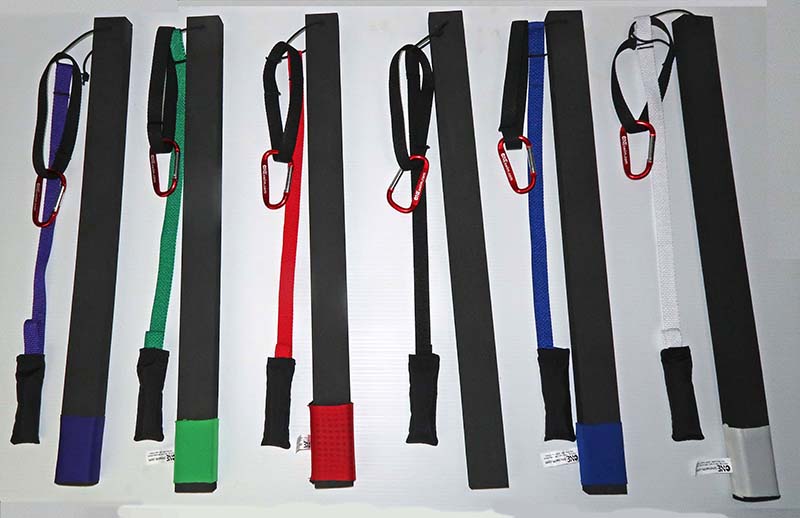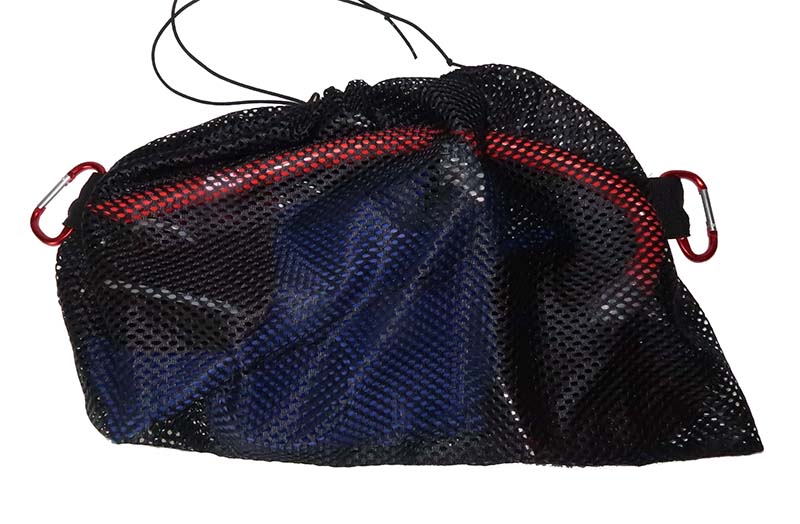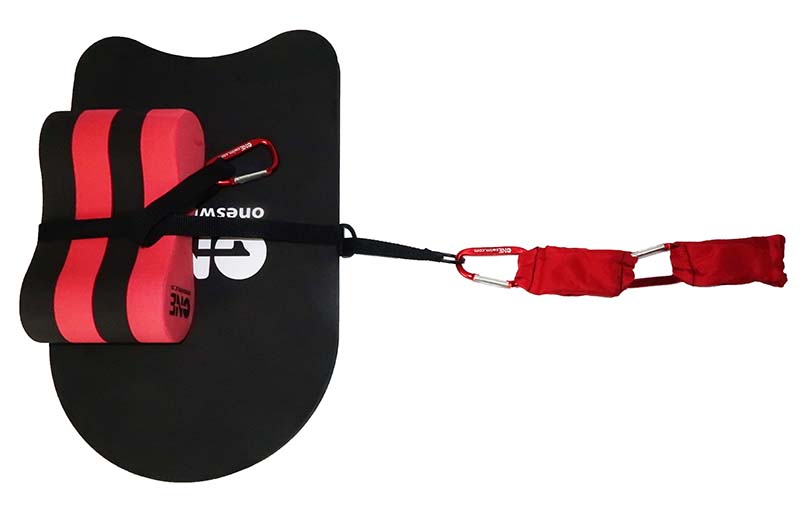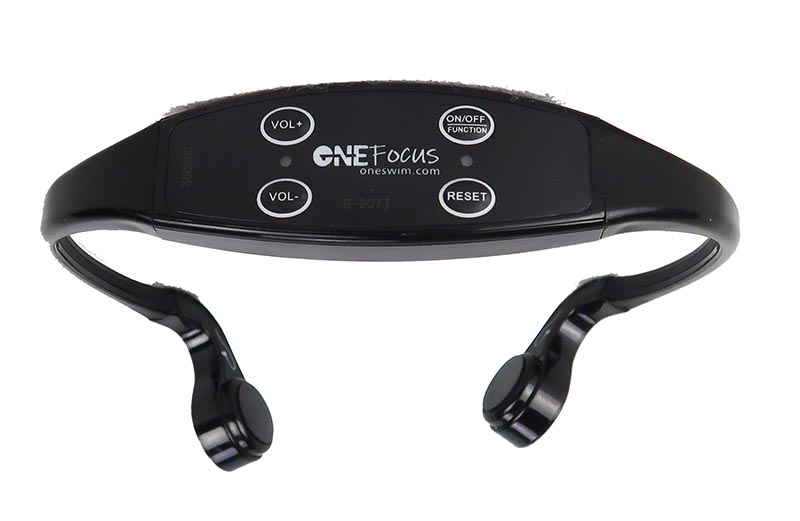By Swimming World Magazine Partner Content
06 May 2020, 03:08pm
Can we safely swim with 6 people in a lane?
We hear a lot about the rules of running a gym with social distancing. There is plenty of support about managing our pool bathroom, or how to navigate at <50% capacity for a business. But as swim coaches the final key is to understand how to keep swimmers 6 or 10 feet apart while they are in a lane together. We can tether them to bungees on a lane line. We can have 2 swimmers per lane (one at each end of the pool). We can create complex lane position assignments with some swimmers at the wall and others in the middle of the pool. But none of these options provide us any long term value if we need to ‘socially distance’ our swimmers for months or longer. Having some swimmers start off the wall while others start in the middle of the pool creates chaos, collisions, and confusion for swimmers and coaches. If you only circle swim from a dive and have swimmers get out at the end of each distance, you still have pile-ups if swimmers don’t get out of the pool very quickly, and with exhausted swimmers, this certainly can’t happen very long. We coaches need a safe way to get back into training swimmers. We cannot wait until the last possible moment to resume practices. We know that our swimmers’, parents’, and coaches’ safety is the most important problem at hand. We don’t have a lot of grace period to sort out how we build new sets at the same time as how we keep the swimmers from becoming confused and stopping at the walls together. When parents see their swimmers stopping together in the lane, they will quickly get frustrated and pull their kids from our teams or move them to a team that they feel does a better job of keeping their swimmers separated. The SeaWolves Swim Team, located in Georgia, started training with Social Distancing protocols in late February, before stay-at-home orders were in place. The SeaWolves started with 2 small training groups so they could document their workouts, sets, and processes just before they had to stop swimming in order to have videos and methods ready for training the rest of their swimmers when the team came out of hibernation later. This early experimentation with social distancing protocols gave the SeaWolves the chance to evaluate what would work and what wouldn’t. They quickly decided that all of their swimmers needed to have a ‘home base’ to return to as their new ‘starting wall’. When 1-2 of their swimmers were starting at a wall, it was a physical disadvantage to those in the same lane that were starting away from the walls. They also learned that the process of rotating the stopping locations (such as rotating who was at the wall each set) was far too confusing and created accidental ‘pile ups’ between swimmers, even though the SeaWolves were training with headsets so the coach was talking to each swimmer 100% of the time. Still accidents happened and swimmers ended up stopped in the same locations. So their experience taught them that:
- It was best to assign a ‘home’ position for each swimmer.
- The ‘home positions’ all needed to be away from the walls so no one had an advantage or disadvantage
- The ‘home positions’ needed to be marked by a unique color, both below the lane line as well as something standing up well above the lane line so it could be seen when swimming on the back or on the stomach for any type of kick or swim sessions.
- Each swimmer needed a way to store their equipment at their ‘home’ position to avoid going back to the walls for gear changes and thus avoiding any ‘pile up’ at the walls between sets (and also save time in the workouts).
- Their gear storage needed to be out of way and not drift/float into the lanes when circle swimming.
The process the SeaWolves developed allowed them to fit as many as 5 swimmers per line and none of them were starting/stopping at a wall position (1 under each backstroke flag, 1 at each red line, and 1 in the center of the pool). However a 6th location was possible at the wall, as long as that was for the leader in each lane and not the last person in the lane. If the last person in the lane is on a wall, they will easily push off and run into the person in front of them due to the clear advantage of a wall push compared to a start without a push. So as long as the front lane leader is on the wall and the other 5 swimmers are stationed along the lane line, this can work but not ideal. The layout the Seawolves used with 5 positions down the lane creates about 12 feet from each swimmer in the same lane and 8+ feet between swimmers and the swimmers in the lanes next to each other.
But the SeaWolves were left with several physical problems that needed to be solved:
- How to mark each ‘home’ position above the lane line so it was visible when swimming on the back
- How to store all possible gear so each swimmer could stay at their ‘home’ position 100% of the time during a 2 hour practice and not create a lot of swimmer interactions as swimmers went back and forth to the walls to get their gear.
They also had to re-invent their terminology so swimmers could understand old sets and new workouts:
- Was ‘100 yard swim’ from wall to wall or from ‘home’ position back to ‘home’ position? For this they decided to call ‘home to home’ a ‘true 100’. When they wanted to race 100 yards from ‘wall to wall’ the swimmers know that a ‘wall 100’ means that you have a easy swim to the first wall and then race wall to wall for 100 followed by an easy circle swim back to their home location (which actually works out to 150 yards as the kids were quick to point out!)
- That a ‘true 75’ yard distance is not actually possible unless you have swimmers stopping across from their ‘home’ position and crossing the lane in front of other swimmers still finishing their swim.
- 100 IM can be ‘true’ or ‘wall-to-wall’… but mostly it needs to be ‘wall-to-wall’ or the lead swimmers only have 1-2 strokes of Fly. Therefore IM swims need to have an ‘easy free’ on the front and back of the 100 or 200 IM.
- With all of the swimmers starting away from the walls, coaches have to address HOW swimmers can start. Most swimmers naturally want to drop down to the floor to push off, but this process is near impossible in very deep pools and far too easy when part of your lane is only 4 feet deep. So to level the playing field, the SeaWolves decided they would have all swimmers laying flat with their right hand on the lane line (just in front of their Station Marker) and get ONE single pull on the lane line to start off. When some swimmers started from the floor and others from a kick and others from a lane pull, there are too many pile ups and it is impossible to get timed sets and compare times from such differences.
- Timed set can be tricky. For swimmers without headsets they can start with the clock from their lane position (with a lane line pull) and then sight the clock as their eyes pass their Station Marker. If the swimmers have headsets it is easier if the coach calls out the times (every second) and the swimmers listen for their time as their eyes pass their Station Marker.
To the surprise of the SeaWolves coaches and their swimmers, their swimmers actually liked and preferred this process of having their own space. They liked everyone starting and stopping at the same time without the 5 sec delay for each person and as much as 40 sec from the leader to the last person in the same lane. They liked having their own space and not fight to get to the wall for a rest. They liked having their own gear in their own space and not having to climb over each other to get their fins. Any swimmer that was used to swimming in the back part of a lane were much happier that they could hear the instructions because they stopped at similar times as the leaders. Everyone got to hear each other’s jokes and banter instead of only the leaders. They didn’t have the leaders leaving just as the last swimmers were finishing up, so they all have similar breaks and could enjoy their social time better as a group. Swimmers are creatures of habit so the SeaWolves coaches expected to have a lot of push back from their swimmers ‘hating’ it like they hate most new changes. But it was a pleasant surprise when the swimmers liked it. And most importantly, the SeaWolves swimmers knew that a process like this would mean they could get back to swimming faster after a stay-at-home order was lifted.
To solve the physical problems SeaWolves turned to their sister company, ONESwim.com. These 2 companies constantly work together to develop and test new swim products for competitive swim teams. ONESwim packaged the SeaWolves approach to social distancing into their Swim Practice Social Distancing Protocol by ONEswim.com. This protocol offers plenty of videos, solutions, and answers to how they can provide swim teams with a high end training program while keeping them apart. This Swim Practice Social Distancing Protocol is a great way to train while keeping a constant and appropriate distance between swimmers to remain safe from possible infection. ONESwim started by solving the problem of color coding Station Markers that would stand up above the lane line for easy identification by swimmers above and below the water. The Station Marker attaches to the lane line with just a simple carabiner and is weighted to hang straight down below the lane line and a colored float that stands straight up.
To account for swim equipment the protocol includes a Gear Hammock that hangs below the lane line to hold fins, paddles, snorkels and more. A weighted Kickboard/Buoy Lane Line Mount will hold a kickboard and/or buoy at the same time, in an upright position against the lane line so it does not float into the lane. These tools allow the swimmers to easily access any of their equipment for quick equipment changes throughout the set without having human contact at the walls. The ONEfocus is the modern headset system by ONESwim that works perfectly for social distancing. Unlike some headphone systems that turn off when the swimmers do a flip turn, the bone conduction ONEfocus headsets stay on 100% of the time using radio frequency,, even when the swimmers are quite deep underwater. The coach has a microphone headset and is talking to all the swimmers in his group at all times. There are 7 channels so different coaches can be on different channels to handle up to 7 groups in the same pool. With new terminology and spreading out swimmers all down the lane, the ONEfocus makes it so the swimmers can even hear the coach whispering to them with ease. They won’t miss anything and the coach is more relaxed while training completely new sets and processes.
Check out the Corona Virus Prevent Plan for additional help from ONESwim with workouts, videos, plans, terminology and other support for your in-water training for 2020. Share your own sets and ideas about how you use this system as well.
Getting back to swimming is exciting but of course we don’t know if we will have meets this year, have more stay-at-home orders, will get most of our swimmers to return, or much of anything too far into the future. But being prepared to show our families that we CAN be safe is of the utmost importance to the industry right now, so take the time to do your research and have a plan.
Additional Information:

The Station Marker is used to mark the lane line so that swimmers can see it both above and below the water level. To install, the swimmer just hooks on a carabiner to the lane line, allowing a color coded foam float to stick up above the water and an equal colored weighted strap to hang below. This acts as a ‘home station’ for each swimmer to be spread throughout the lane. Each swimmer starts and stops from the same point throughout the lane, to eliminate any need for time at the wall. This pairs with the Gear Hammock to hold gear the swimmer may need at their stations.

The Gear Hammock is a gear bag that easily attaches and hangs under the lane line. A weighted version will help keep some floating items from drifting into the lane. This product is ideal for any size fins, snorkels, paddles, and much more at the same time. A drawstring closes to keep any items from drifting out of the bag.

The Kickboard/Buoy Lane Line Mount easily attaches kickboards, buoys, or both at the same time. The mount keeps the kickboard and buoy out of the way of the swimmer, and upright against the lane line. The weighted strap design makes it easy to insert and remove any kickboard or buoy from the mount.

The ONE Headsets include a protective case and DC charger. Swimmers can easily charge their individual headset on the way to and from swim practice, in the car. This is an extremely helpful tool for starting practices back up. Being able to communicate to your swimmers at all times has never been more important. Keeping swimmers away from each other in the lane, will be much easier to control if you can talk directly to them through their headsets because you know they can hear you.









